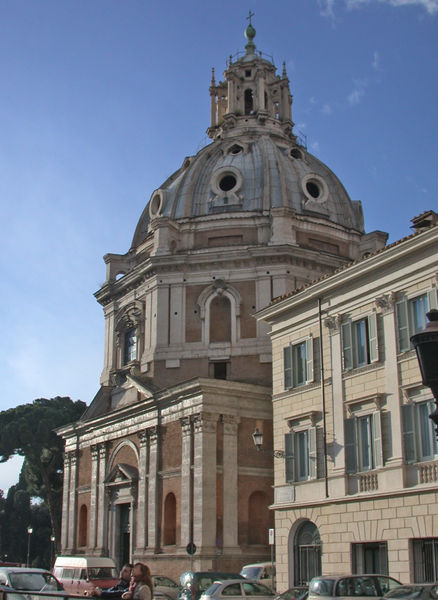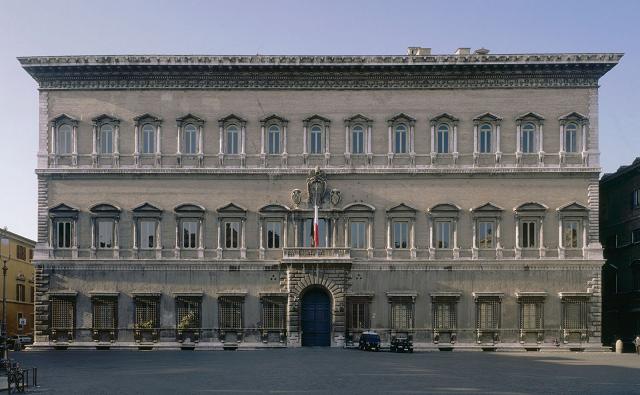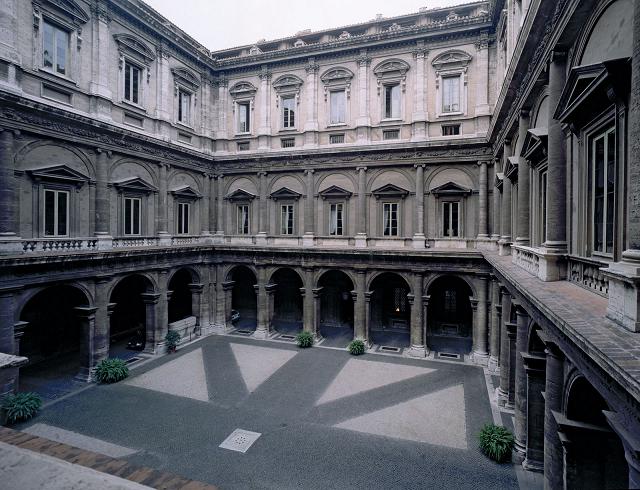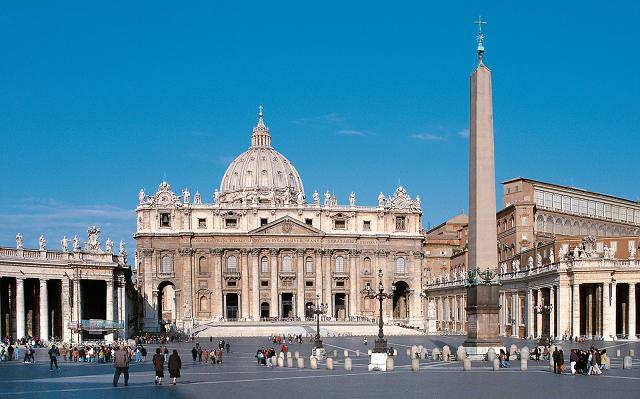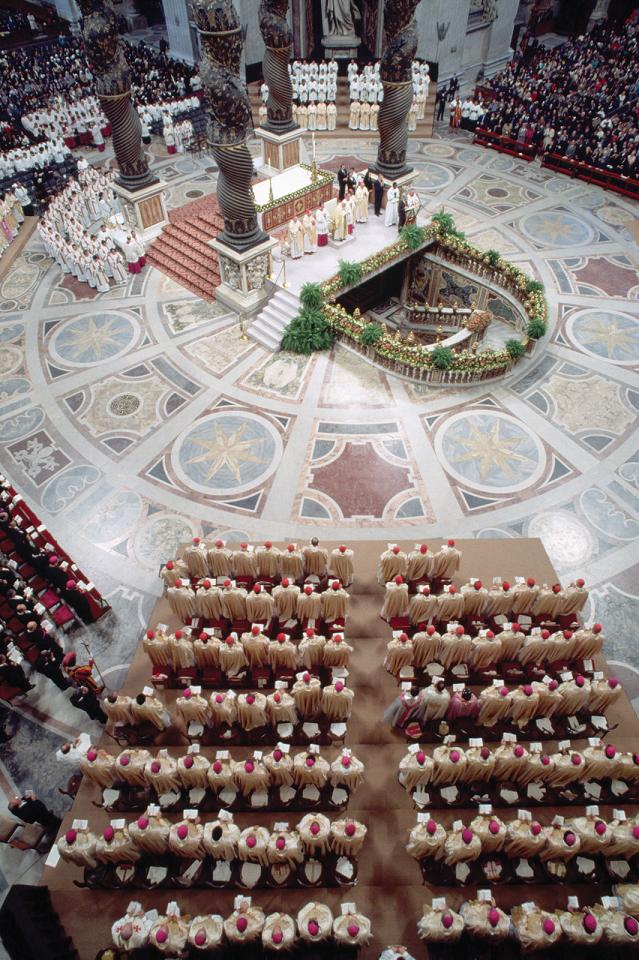<Back to Index>
- Mathematician Carl Louis Ferdinand von Lindemann, 1852
- Architect Antonio da Sangallo the Younger, 1484
- King of Denmark Christian IV, 1577
Sangallo was born in Florence. His grandfather Francesco Giamberti was a woodworker, and his uncles Giuliano and Antonio da Sangallo were noted architects of the time. He went while very young to Rome, and became a pupil of Bramante, of whose style he was afterwards a close follower. He lived and worked in Rome during the greater part of his life, and was much employed by several of the popes. His most perfect existing work is the brick and travertine church of Santa Maria di Loreto, a building remarkable for the great beauty of its proportions, and its noble effect produced with much simplicity. The lower order is square in plan, the next octagonal; and the whole is surmounted by a fine dome and lofty lantern. The lantern is, however, a later addition. The interior is very impressive, considering its very moderate size.
Antonio also carried out the lofty and well-designed church of San Giovanni dei Fiorentini, which had been begun by Jacopo Sansovino. The east end of this church rises in a very stately way out of the bed of the Tiber River, near the bridge of Sant'Angelo; the west end has been ruined by the addition of a later facade, but the interior is a noble example of a somewhat dull style. Great skill was shown in successfully building this large church, partly on the solid ground of the bank and partly on the shifting sand of the river bed. Antonio also built the Cappella Paolina and other parts of the Vatican, together with additions to the walls and forts of the Leonine City. His most ornate work is the lower part of the cortile of the Farnese Palace, afterwards completed by Michelangelo, a very rich and well-proportioned specimen of the then favorite design, a series of arches between engaged columns supporting an entablature, an arrangement taken from the outside of the Colosseum.
A palace in the Via Giulia built for himself still exists under the name of the Palazzo Sacchetti, much injured by alterations.
After the Sack of Rome (1527), he mainly worked in other cities, mainly as military architect: he designed, for example, the fortifications of Ancona. He also constructed, on commission of pope Clement VII, the very deep (62 m) and ingenious St. Patrick's rock-cut well at Orvieto, formed with a double spiral staircase, like the Well of Saladin in the citadel of Cairo.
He often worked with his brother Giovanni Battista da Sangallo. The two worked on numerous projects together, Giovanni Battista responsible for measuring and surveying.
